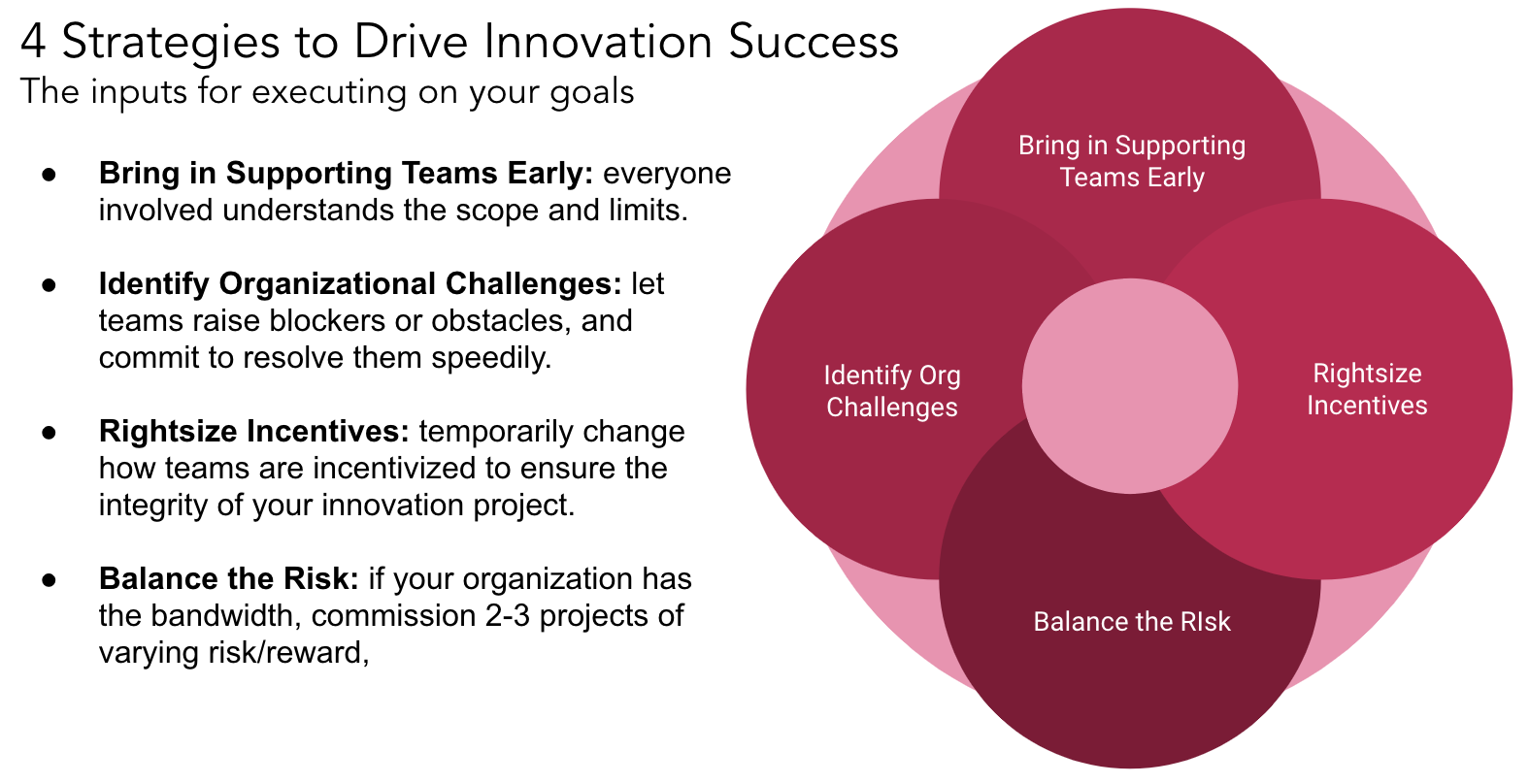
There’s no shortage of facts, opinions and meeting notes about innovation. Everyone wants to do it, but most are not successful. In fact, HBR research suggests that nearly 90% of all innovation labs, teams or projects fail!
While there are likely an infinite number of reasons that happens, most issues can fit into a balance between creativity and discipline. These aspects are opposing sides of the same coin, and each has to be carefully managed to successfully arrive at your innovation goals—whether that’s growing revenue, reaching new customers, or improving your business processes.
What does a balance between creativity and discipline imply? Think of it as an equation:

Companies are rarely short on creative ideas. The tension point arrives when teams are not disciplined in their approach. Regardless of how big or small, incremental or transformational an idea is, teams have to ask the hard questions. Questions like:
- Is it the right time to test this idea?
- Do we have what it takes to pull this off?
- Is this what customers want?
- Is this what we want?
- What do we lack to be successful with this idea?
Not sure of your answer to those questions or the likelihood of success? That’s ok! There are 4 best practices you can follow to stack the odds in your favor. Each of these key strategies support a culture of innovation success. They are: bring teams in early, identify org challenges, rightsize incentives, and balance risk.

How do these aspects help drive a culture of success? Each one directly focuses on the organization as a whole and its maturity.
By bringing in teams early, you are creating a space that shares information and looks to employees for answers vs senior leadership. In fact, most employees are disengaged from innovation projects since those opportunities are often closed to a select few, or tone-deaf to the real challenges the organization is facing.
This dynamic starts to play into the challenges that exist at the organizational level. The best strategy does not matter if the company nor its people cannot execute on it. Being open to identifying org problems (whether process, team or even people focused) creates a culture of evolution and transparency. Plus, your employees navigate and experience these obstacles all-day, everyday. They are best equipped to surface these challenges, and will most likely share ways to resolve them.
In order to capitalize on moving innovation through the organization, it is imperative to ensure that teams have aligned incentives. That does not mean that an all-hands took place and the strategy or innovation project was communicated. Creating an aligned innovation plan means ensuring that all teams, from Marketing and Sales to Product and Engineering, understand their role, know how they contribute to the goal, and are all moving in the same direction. The best way to accomplish this is to ensure that each department does not have competing priorities. Competing priorities dissipate when each team has one common goal, with department specific objectives that each leader has signed off on with their peers.
Creating a culture of innovation success requires intentionality. You want to encourage the bold, creative ideas that come from your teams, while also being disciplined to ensure that the investment will make a return. If you are new to innovation and new idea launches, then start small. Crowdsource quick wins from your teams, and use the principles outlined here to help move those ideas from concept to reality.
Are you looking to join a work culture that nurtures creativity and innovation? Check out our careers page. We’d love to hear from you!